Inferring Shallow And Deep Cut Diamonds Using Carat Weight
First of all, there are several reasons why it’s useful to know the relationship between carat weight and mm measurements.
1) If you know a diamond’s physical dimensions, you can approximate the carat weight of the stone. Likewise, you can work backwards to estimate the physical dimensions in mm when somebody tells you the carat weight of an ideal cut stone. Information like this is useful when you need to glean through specifications of mounting it into a setting.
2) More importantly, with the relative mm measurement against the carat weight, you can tell if the stone had been cut properly. Basically, the optical properties of a diamond are governed by the laws of physics and light. When it comes to cutting diamonds, an ideal cut round brilliant has to fall within a certain set of parameters and proportions.
To be a smart shopper, you can use this knowledge to your advantage. As an example to illustrate this, we will use a 1 carat round diamond. Ideally speaking, if the rough had been cut to perfect proportions, the resultant stone will have a length and width of 6.50 mm X 6.50mm.
By eliminating one-carat round stones that don’t have proportions close to 6.50mm (less than 6.40mm and more than 6.60mm), you can weed out the non-performing stones quickly.
Here’s An Example of a Diamond With Good Proportions

This diamond has dimensions within the “Goldilocks” zone
As you can see, it is very difficult to get a perfect 6.50mm X 6.50mm diameter when humans are involved in the cutting process. If you try to look for a stone with these exact dimensions, chances are, you wouldn’t find one.
You would probably be able to find one with dimensions that come close to the “best theoretical” proportions. Needless to say, these are the kind of proportions you should be looking at to get a brilliant and sparkling diamond.
Now, if the diamond is physically too big (shallow) or too small (deep) for its carat weight, there some red flags you need to raise. I can tell you upfront that in 99.99% of these scenarios, the rough had not been cut for optics.
Instead, the rough diamond was cut to retain weight in order to maximize the jeweler’s profits. The consequences of these actions are always the same. It results in a stone with a lack of brilliancy and sparkle.
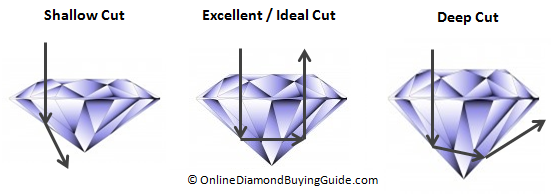
Need Proof? Here’s What You Get With Shallow And Deep Cut Diamonds

Examples Depicting Poorly Proportioned Diamonds With Photographs
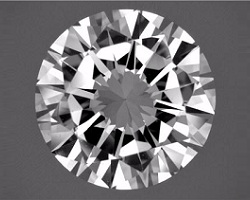 Shallow Cut
Shallow Cut
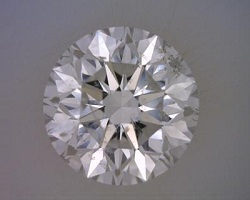 Deep Cut
Deep Cut
Diamonds that are cut too shallow tend to exhibit a ‘fish eye’ effect which is detrimental to its looks. This is a phenomenon that occurs when the girdle is reflected under the table facet. While the above example (left) shows a fish eye effect that is beginning to form, the photograph below shows one with a severe fisheye.
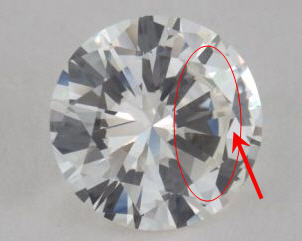
With a slight tilt, a gray girdle reflection appears
The surprising thing is that most consumers are not properly educated and they only realize this after they make a purchase. On the other hand, there are also people who know of this but still decide to go ahead in purchasing stones that lack life, sparkle and beauty.
Why?
This is because these stones hit a certain carat weight and such shoppers are looking to fulfill requirements (or constraints) placed upon them. Sadly, the only way that they could afford these diamonds is to compromise on cut (instead of the other C’s) and settle on a poorly made diamond.
In either scenario, they still end up as ‘losers’ when friends or relatives start comparing diamonds side by side. I strongly advice against the notion of sacrificing cut for size as you will see a huge contrast in the stone’s life and beauty.
Ultimately, it’s your money and you can choose what to do with it. I just hope that you make choices based on educated decisions and not based on impulse or luck.
With that, it brings us to the next topic. Is a bigger diamond always better? Click next to read a case study on carat vs. cut we performed…
Related Articles
Leave A Comment

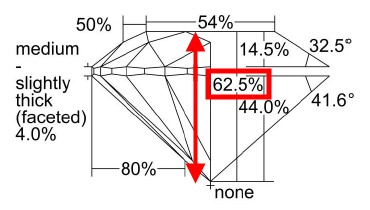

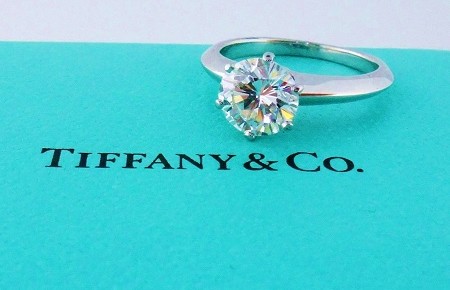
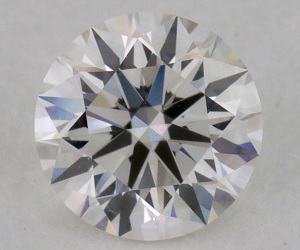









4 Comments
Hi there,
We just picked a cushion brilliant that the jeweler claims would be considered an ideal cut. It does look stunning in person, but the depth on the GIA certificate threw me off.
It is 1.01 ct and 6.02×6.00×4.05mm. Color H and VS2. Excellent polish and symmetry. 60% table, 67.5% depth.
From my comparisons, I feel like 4mm depth is quite deep. Worried about the effect on light. What are your thoughts?
It’s really tough to say and impossible to decipher light performance simply based on numbers. For a cushion shape, a 67.5% isn’t considered deeply cut.
Read these:
https://beyond4cs.com/grading/aset-reference-charts/
https://beyond4cs.com/buying-diamonds-blind/
My budget is $10,000 for stud diamond earring…want 3 carats, any suggestions where to buy the best diamond with this budget? I want to avoid shallow cut diamonds and want the best sparkle possible.
Here’s a word of caution; expecting to buy a 3ct diamond with $10,000 is unrealistic and will only expose you to getting ripped off. My first piece of advice is to go manage your expectations first.
And then, read these articles:
https://beyond4cs.com/engagement-ring/3-carat/
https://beyond4cs.com/earrings/choosing-the-best-diamond-studs/